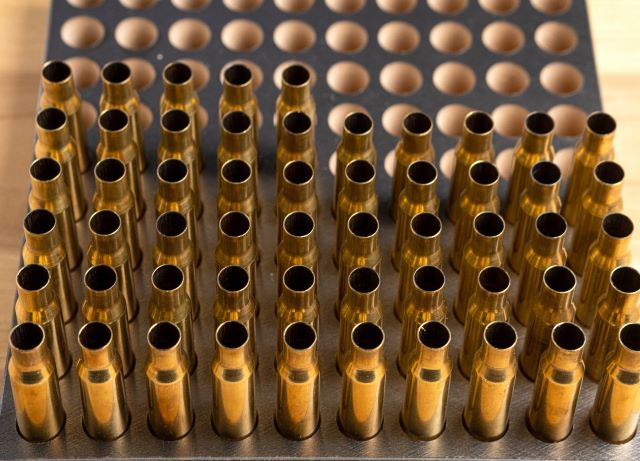Reloading ammunition is a popular hobby among firearm enthusiasts. However, the production of new brass can hurt the environment, as it requires the extraction and processing of raw materials. Remanufactured brass, also known as once-fired brass, is a sustainable alternative that offers several benefits. Besides, experts will sketch the benefits of using remanufactured reload brass.
Take a look!
Reload Smarter, Not Harder: The Benefits of Remanufactured Brass
Environmental Sustainability:
Once-fired reload brass is a sustainable alternative to new brass. The production of new brass requires the extraction and processing of raw materials, which can harm the environment, as stated above. This, on the other hand, is made from re-processed brass scrap, minimizing the need for raw material extraction and decreasing trash.
The procedure involves melting down the scrap brass and removing impurities to create top-quality brass products. This process reduces the energy required to produce new brass, resulting in lower greenhouse gas emissions and energy consumption.
Cost-Effectiveness:
Habitually, it is less expensive than new brass, making it a budget-friendly choice for reloading ammunition. The approach is also slightly more labor-intensive than producing new brass, further diminishing expenses.
In addition, remanufactured reload brass has a longer lifespan than new brass, as it has already been through the manufacturing process once and has been refined to eliminate contaminants. It points out that once-fired brass can offer long-term cost savings for firearm shooters who frequently replenish their ammunition.
Consistent Quality:
Perhaps the process involves refining the metal to remove blemishes and enhance its quality. This results in brass that is stronger, more durable, and resistant to corrosion than new brass. It also has a uniform composition, ensuring consistent performance in various firearms. It makes it a reliable choice for utilization in ammunition reloading, where consistency is critical for accuracy and safety.
As the demand for sustainable products grows, once-fired reload brass is an excellent option for firearm enthusiasts looking to minimize their environmental footprint and save bucks.
From Range To Recycler:
So how does brass go from being fired at the range to being remanufactured and sold to reloaders? The journey starts with the shooter, who fires the brass casing from their gun. The spent casings are then collected and sorted by field staff or volunteers. Once it has been collected, they’re transported to a recycling facility.
At the building, it is sorted by caliber and inspected for any defects or damage. Any casings that are mismatched for remanufacturing are separated and sent to be melted down; recycled into new brass. The casings that are appropriate for reprocessing are cleaned, deprived, and resized using specialized equipment.
The Remanufacturing Process:
Once the brass has been cleaned, deprived, and resized, it’s ready for the next stage of the remanufacturing process. It involves inspecting the brass for flaws or wear, such as splits, cracks, or bulges. Any casings that don’t meet the strict quality standards are removed and sent for recycling.
The brass that passes inspection is then polished to remove any remaining debris or tarnish. Ultimately, the brass is packaged and sold to reloaders who are looking for a cost-effective and eco-friendly alternative to buying brand-new brass.
So, however, it takes a while and is challenging to recycle, the benefits are unstoppable!
The Dos and Don’ts of Choosing Once-Fired Reload Brass.
As a reloader, picking an appropriate remanufactured brass is essential for creating top-notch ammunition. Not only does it affect the performance of ammo, but it can also influence the lifespan of a firearm. However, with so many different types of brass on the market, it can be tricky to know what to look for.
Let’s see some dos and don’ts!
Do: Check the Headstamp
One of the most critical things to consider when opting for once-fired reload brass is the headstamp. Yet, it will tell people the manufacturer, caliber, and year of production. It’s crucial to use brass that is the same caliber as their firearm and utilize it from the same manufacturer to ensure consistent performance. Checking the headstamp can also help pinpoint any potential safety issues, such as using that is too old or has been damaged.
Don’t: Choose Brass with Signs of Wear
When selecting remanufactured reload brass, it’s essential to inspect it for signs of damage. It includes reviewing for notches, splits, or dents that can impact the safety and functionality of ammo. Using a damaged one can cause malfunctions or even cause a firearm to fail. If shooters find any signs of damage, it’s best to discard the brass and find a new batch.
Do: Check for Compatible Dimensions
If seasoned reloaders wish to achieve a consistent ammo version, it’s crucial to take advantage of once-fired reload brass with constant dimensions. When checking their brass, examine that it has uniform wall thickness and consistent length. Uneven size can influence the pressure of their ammo and cause malfunctions or even dangerous situations. Always measure a brass before reloading to ensure that it meets the specifications for its caliber.
Choosing the right once-fired to reload brass is vital for making high-end, reliable ammunition. With these tips in mind, seasoned professionals or beginners be on their way to creating safe, steadfast ammo that performs consistently.

As the editor of the blog, She curate insightful content that sparks curiosity and fosters learning. With a passion for storytelling and a keen eye for detail, she strive to bring diverse perspectives and engaging narratives to readers, ensuring every piece informs, inspires, and enriches.










